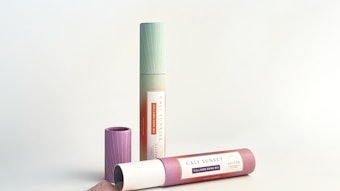
A new survey finds many consumers are alienated by brands and product aisles that declare certain hair types as “ethnic” or “multicultural.”
Stephanie Rodriguez is a Latina with 3b curls. When she goes shopping for hair care products, she said she is looking for sulfate-free shampoos and curl-specific products from brands like Carol’s Daughter, SheaMoisture, Pantene and Garnier.
“I think it should be organized by hair type/brands so it’s easier to pick out what you need for your hair, rather than just shoving the ‘ethnic’ section in the corner where people can feel left out,” she says.
Indeed, the terms “ethnic” and “multicultural” are sometimes acceptable when it comes to identifying one’s background or origin, but when it comes to shopping for hair care, these terms are increasingly outdated, according to TextureMedia’s (www.naturallycurly.com) recently released “Perception Study: Ethnic and Multicultural Haircare Experience.”
The study finds that most people with curly, coily or wavy hair—no matter what their ethnicity—consider their hair to be natural, textured or curly, rather than “ethnic” or “multicultural. In addition, the term “ethnic” on products or beauty aisles causes dissatisfaction among a major group of consumers who consider the term to be causing division.
Textured Hair Not Limited by Ethnicity
Martha Fast, who is Caucasian, says she always feels like she is “intruding on someone else’s space” when she’s shopping in hair care aisles labeled “ethnic.”
Jennifer Jevy, a NaturallyCurly community member, adds, “Curly hair isn’t limited to one ethnicity.”
“It’s something I think about every time I have to pick up hair stuff,” says community member Ada Nicole. “It’s no wonder ethnicities feel ostracized. Races don’t need to be ‘called out,’ and not every white person has straight hair!”
The Textured Hair Boom
The textured hair category has been one of the fastest growing and most dynamic in the beauty industry. Since NaturallyCurly’s inception 19 years ago, the number of products on the market has grown exponentially, with dozens of new brands launching each year specifically for texture.
Every major hair care brand now offers products for textured hair, and traditionally “ethnic” brands have expanded their offerings to a broader customer base that wants to enhance its natural texture. The question about what to call the aisle or section devoted to these products is one of the most hotly debated among retailers.
There was a time when retail stores divided up their hair care aisles by general market and ethnic. This has created habits that persist. For many who do search out the ethnic aisle in their store for their favorite products, it’s more out of habit.
“It points me in the right direction,” says survey respondent Ebonie Andrews.
However, as the texture category has exploded, catering to a diverse customer base, naming the section has become more complicated. How do brands and retailers create a name that’s inclusive and descriptive? How do they attract new customers without alienating others? To get answers, TextureMedia reached out to its community.
What More Than 600 Women Think
TextureMedia’s Perception Studya surveyed 613 women—black, Caucasian, Latina and biracial/multiracial—about the terms “multicultural and “ethnic” as it relates to hair care products and their shopping experience. We also conducted eight online discussions with 31 NaturallyCurly community members, followed by an online survey.
Among the key findings:
- Almost half the respondents believe hair cannot be classified as ethnic or multicultural, while some define ethnic or multicultural hair as hair belonging to someone who is ethnic or multicultural, respectively.
- All ethnic groups consider themselves to be ethnic, excepting the “white/Caucasian” respondents.
- Most white/Caucasian consumers surveyed started shopping in ethnic/multicultural aisles after getting educated about hair care for their hair types; most Black/African consumers have always shopped on ethnic/multicultural aisles.
For respondent Heather Wexler, the name of the aisle isn’t as important as what’s in it: “I don’t really care, as long as it’s there and it’s stocked. I understand that as a white/Jewish/Italian American woman with extremely thick and tightly curled hair, I’m not generally the target demographic for these products. I use them anyway because nothing else works for my hair type.”
Footnote: aTextureMedia’s Perception Study is a part of the company’s Insights Suite, which includes the twice-yearly TextureTrends survey of textured hair consumers; syndicated research comprising category and trend reports and data pulls; custom research comprising online surveys and focus groups, testing for ads, products and concepts, brand positioning and tracking studies, and more; and its Trendsetters Insights Community, which is made up of 13,000 consumers who participate in surveys, opinion polls, and online discussions related to hair care and beauty products and services.
Michelle Breyer is the co-founder of TextureMedia, which offers marketing services and data-driven insights for brands, as well as NaturallyCurly.com, a content platform that includes the e-commerce platform, Shop NaturallyCurly.











